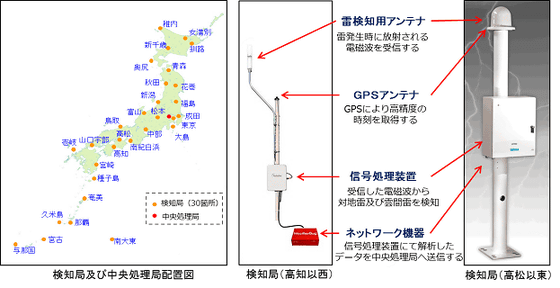Artificial intelligence to predict where and where lightning strikes will be developed

By
Based on atmospheric pressure, temperature, relative humidity, and wind speed, artificial intelligence (AI) that predicts whether or not lightning strikes within a radius of 30 kilometers has appeared.
Nowcasting lightning occurrence from commonly available meteorological parameters using machine learning techniques | npj Climate and Atmospheric Science
https://www.nature.com/articles/s41612-019-0098-0
Using AI to predict where and when lightning will strike-EPFL
https://actu.epfl.ch/news/using-ai-to-predict-where-and-when-lightning-will-/
They say lightning never strikes twice, but boffins have built an AI to show where it'll come next • The Register
https://www.theregister.co.uk/2019/11/08/ai_predicts_lightning_strikes/
A lightning strike is a disaster that not only causes electric shock to humans and animals, but also causes damage to electrical equipment and the building itself, and sometimes even large-scale wildfires. Lightning strike prediction systems such as the “ Thunder Nowcast ” provided by the Japan Meteorological Agency have already been put into practical use, but these systems require high costs for the equipment used for prediction. In the case of Thunder Nowcast, devices called “detection stations” that receive radio waves generated by lightning are installed at 30 locations nationwide to collect information, and the central processing station performs arithmetic processing to calculate the “thunderbolt probability”. It is.

A research group of Swiss Federal Institute of Technology Lausanne (EPFL) is a system that predicts lightning from four conditions of atmospheric pressure, temperature, relative humidity, and wind speed by letting AI learn data from the past 10 years of Swiss weather stations. Developed According to this prediction by AI, the distance error is 30 km in radius, and the accuracy rate of prediction that `` lightning will occur within 10 minutes '' is about 71%, and at the time of publication of the paper, `` There are many misinformation '' . However, since the four conditions such as atmospheric pressure are data that can be measured very easily, once this AI is put to practical use, it is possible to reduce the cost of equipment required for lightning strike prediction.

By Free-Photos
In this study, Amirhossein Mostajabi, the creator of lightning prediction using AI, said, “A system currently in practical use requires expensive data acquired by radar and satellite, and the processing itself is slow and complicated. The AI we developed can predict the rate of lightning strikes even in remote areas outside the radar and satellite range. '
Related Posts:







